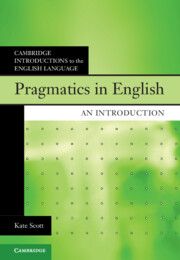Refine search
Actions for selected content:
36807 results in Cambridge Textbooks
Index
-
- Book:
- The Psychology of Poverty, Wealth, and Economic Inequality
- Published online:
- 13 December 2022
- Print publication:
- 05 January 2023, pp 371-386
-
- Chapter
- Export citation
Index
-
- Book:
- An Elementary Course on Partial Differential Equations
- Published online:
- 15 September 2022
- Print publication:
- 05 January 2023, pp 373-374
-
- Chapter
- Export citation
4 - Poverty and Its Costs
- from Part III - Economic Inequality Affects Us All
-
- Book:
- The Psychology of Poverty, Wealth, and Economic Inequality
- Published online:
- 13 December 2022
- Print publication:
- 05 January 2023, pp 73-93
-
- Chapter
- Export citation
8 - Race and Racism
- from Part IV - Intersections
-
- Book:
- The Psychology of Poverty, Wealth, and Economic Inequality
- Published online:
- 13 December 2022
- Print publication:
- 05 January 2023, pp 159-182
-
- Chapter
- Export citation
4 - Synchronization and Communication Primitives
-
- Book:
- Introduction to Parallel Programming
- Published online:
- 27 October 2022
- Print publication:
- 05 January 2023, pp 75-110
-
- Chapter
- Export citation
8 - Algebraic and Transcendental Equations
-
- Book:
- Computing in Scilab
- Published online:
- 15 October 2023
- Print publication:
- 05 January 2023, pp 315-348
-
- Chapter
- Export citation
7 - Societal Economic Inequality
- from Part III - Economic Inequality Affects Us All
-
- Book:
- The Psychology of Poverty, Wealth, and Economic Inequality
- Published online:
- 13 December 2022
- Print publication:
- 05 January 2023, pp 137-156
-
- Chapter
- Export citation
3 - Warmup: Some Linear Algebra
-
- Book:
- Actions of Groups
- Published online:
- 03 May 2023
- Print publication:
- 05 January 2023, pp 48-76
-
- Chapter
- Export citation
12 - Social Networks and Social Supports
- from Part V - Contexts
-
- Book:
- The Psychology of Poverty, Wealth, and Economic Inequality
- Published online:
- 13 December 2022
- Print publication:
- 05 January 2023, pp 254-272
-
- Chapter
- Export citation
Acknowledgments
-
- Book:
- Reproductive Biology of Angiosperms
- Published online:
- 05 January 2024
- Print publication:
- 05 January 2023, pp xxiii-xxiv
-
- Chapter
- Export citation
Preface
-
- Book:
- Actions of Groups
- Published online:
- 03 May 2023
- Print publication:
- 05 January 2023, pp ix-xiii
-
- Chapter
- Export citation
Dedication
-
- Book:
- Reproductive Biology of Angiosperms
- Published online:
- 05 January 2024
- Print publication:
- 05 January 2023, pp v-vi
-
- Chapter
- Export citation

Pragmatics in English
- An Introduction
-
- Published online:
- 29 December 2022
- Print publication:
- 29 December 2022
-
- Textbook
- Export citation
Chapter 6 - Relevance-Theoretic Pragmatics
-
- Book:
- Pragmatics in English
- Published online:
- 29 December 2022
- Print publication:
- 29 December 2022, pp 111-135
-
- Chapter
- Export citation
4 - Professional Context: Journalism, PR, and Community Communication
-
- Book:
- Digital Communication and Media Linguistics
- Published online:
- 18 February 2023
- Print publication:
- 29 December 2022, pp 95-136
-
- Chapter
- Export citation
Chapter 8 - Figurative Language
-
- Book:
- Pragmatics in English
- Published online:
- 29 December 2022
- Print publication:
- 29 December 2022, pp 165-188
-
- Chapter
- Export citation
Appendix C: Useful Formulas from Probability
-
- Book:
- A Hands-On Introduction to Machine Learning
- Published online:
- 20 January 2023
- Print publication:
- 29 December 2022, pp 382-382
-
- Chapter
- Export citation
Chapter 9 - Politeness
-
- Book:
- Pragmatics in English
- Published online:
- 29 December 2022
- Print publication:
- 29 December 2022, pp 189-225
-
- Chapter
- Export citation
2 - Python
- from Part I - Basic Concepts
-
- Book:
- A Hands-On Introduction to Machine Learning
- Published online:
- 20 January 2023
- Print publication:
- 29 December 2022, pp 26-48
-
- Chapter
- Export citation
11 - Reinforcement Learning
- from Part V - Further Explorations
-
- Book:
- A Hands-On Introduction to Machine Learning
- Published online:
- 20 January 2023
- Print publication:
- 29 December 2022, pp 303-325
-
- Chapter
- Export citation
